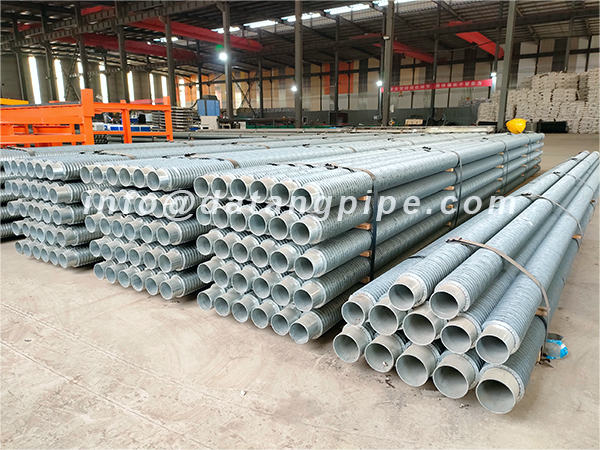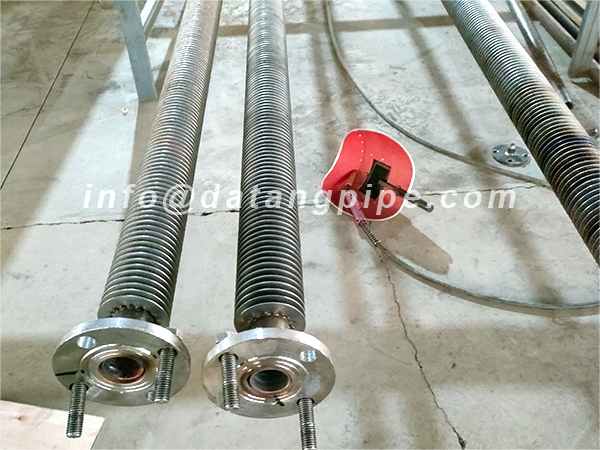High-frequency welded finned tubes for heating in breeding farms
High-efficiency heating in cold winter protects the health of livestock and poultry. High-frequency welded finned tubes use high-frequency welding technology to seamlessly conduct heat. Aluminum alloy fins quickly dissipate heat, heat up in 30 seconds to resist low-temperature stress, uniform temperature reduces disease risks, corrosion-resistant materials extend service life, easy installation and worry-free maintenance, and help improve breeding benefits by more than 20%.
In the operation of breeding farms, suitable temperature is crucial for the healthy growth of livestock and poultry and the improvement of breeding benefits. As an efficient heating equipment component, high-frequency welded finned tubes are gradually becoming an ideal choice for heating systems in breeding farms, providing stable and sufficient heat for the breeding environment.

The structural design of high-frequency welded finned tubes fully considers the heating needs. The base tube is generally made of high-quality pipes with good strength and thermal conductivity. The strength ensures that the base tube can withstand a certain pressure during the circulation of the heat medium, ensuring stable transportation of the heat medium without leakage and other problems, and ensuring the normal operation of the heating system. The thermal conductivity allows the heat carried by the heat medium to be quickly transferred to the surface of the base tube, laying the foundation for subsequent heat dissipation. The fins are closely arranged on the surface of the base tube and firmly connected to the base tube through high-frequency welding. The presence of the fins greatly increases the heat dissipation area. When the heat medium flows in the base tube, the heat is transferred to the fins through the base tube, and then dissipated from the fins to the surrounding space, thereby achieving efficient heat transfer.

High-frequency welding process is the core technical highlight of this type of finned tube. During the welding process, the skin effect and proximity effect generated by the high-frequency current are used to quickly heat the contact part between the base tube and the fin to the welding temperature, so as to achieve a tight and uniform connection between the two. This welding method greatly improves the heat conduction efficiency and reduces thermal resistance. Heat can be smoothly transferred between the base tube and the fin, avoiding heat loss caused by loose connection, so that the heat of the heat medium can be fully dissipated into the space of the breeding farm, creating a warm environment for livestock and poultry.

In terms of heating performance, the high-frequency welded finned tube for heating in the breeding farm performs well. Its efficient heat dissipation capacity can increase the temperature in the breeding farm in a short time and quickly resist the influence of cold weather outside. In the cold winter, it can quickly provide warmth for livestock and poultry, reduce the stress response of livestock and poultry caused by low temperature, reduce the incidence of diseases, and promote the healthy growth of livestock and poultry. Moreover, due to the reasonable design of the fins, the heat can be evenly distributed in the breeding farm, avoiding local overheating or overcooling, and creating a suitable and stable growth environment for livestock and poultry.

From the perspective of material properties, the selection of materials for base tubes and fins is very particular. The high-quality pipes used in the base tubes have good strength and thermal conductivity as well as certain corrosion resistance. The environment in the breeding farm is relatively complex, and there may be corrosive substances such as water vapor and ammonia. The corrosion-resistant base tube can effectively resist the erosion of these substances, extend the service life of the fin tube, and reduce equipment replacement and maintenance costs. The fin material is usually selected from materials with good thermal conductivity and light weight, such as aluminum alloy. Aluminum alloy fins can not only efficiently transfer heat, but also be light in weight, and will not bring too much burden to the base tube. At the same time, they also have certain corrosion resistance in complex breeding environments.
The convenience of installation and maintenance is also a major advantage of high-frequency welded finned tubes for heating in breeding farms. Its structure is relatively simple, and the installation process does not require complex construction technology. The installer can quickly complete the installation work, saving installation time and labor costs. In daily maintenance, regularly check whether the fins are dusty, damaged or deformed. If there is dust, it can be cleaned in time to ensure heat dissipation efficiency; check whether the base tube has leakage, corrosion, etc., and take corresponding anti-corrosion measures for minor corrosion. Due to its clear structure, once a fault occurs, the maintenance personnel can quickly locate the problem and repair it, effectively reducing the heating interruption time caused by equipment failure and ensuring the temperature stability in the breeding farm.
High-frequency welded finned tubes for heating in breeding farms have become reliable components of the heating system of breeding farms with their unique structural design, advanced high-frequency welding technology, excellent heating performance, excellent material properties and convenient installation and maintenance methods. It provides a stable warm guarantee for the breeding environment, plays an important role in promoting the healthy growth of livestock and poultry and improving breeding efficiency, and is an ideal choice for heating in breeding farms.
